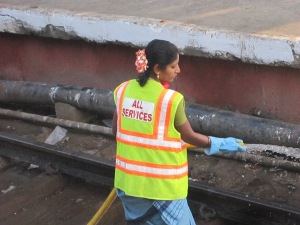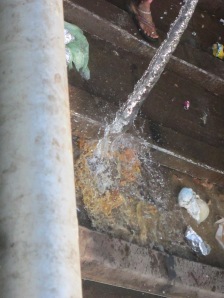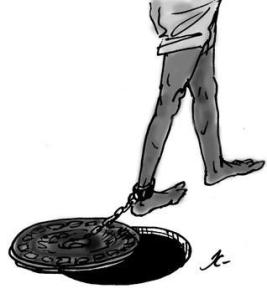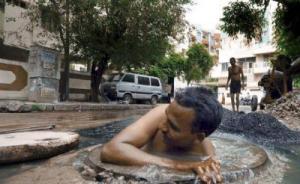Shrilakshmi R – Student at IIT Madras
(A report on the panel discussion with Anand Teltumbde, Bezwada Wilson, P. S. Krishnan chaired by C. Lakshamanan in August 2013 before the Passage of the New Act against Manual Scavenging in September 2013)
Attempting to explore the various dimensions of manual scavenging, the panellists unanimously concluded that all through India, women from only one particular Dalit caste, known by different names in various regions, were being structurally forced to take up this occupation. As is the norm, the burden of “carrying forth the tradition” falls on the womenfolk of the community. Having stated this, Mr. Anand Teltumbde further noted that though manual scavengers were supposed to be given alternative employment under 1993 Act, as per the Supreme Court ruling, several deadlines have whooshed past but the authorities have till now not lifted a finger against anybody. So the people who are engaged in this occupation are forced to continue in it, and their children also end up in it, much to their chagrin. The two main issue he tried to bring to the fore were first abolish manual scavenging and then rehabilitate people engaged in it. Strict policy measures, including enforcing the existing ones would be needed for abolition while strong will-power was required to address the latter, he opined. The former required the utilisation of technology known only too well to humankind. After all, this was the place where Indus Valley civilization had flourished that had planned cities and common baths and underground drainage systems in Harappa and Mohenjo-Daro.
A Shot from the Movie “Shit Still Happens”
For a generation that wonders if any of such heinous practices still exist in the country, it could be considered quite shocking to be told that practise of caste-based allotment of Class-IV jobs still continues at the Panchayat level. For such innocent souls so alienated from the social realities in India, Mr. Bezwada Wilson’s talk was enlightening and revolting at the same time. Hailing from such a community himself, Mr. Wilson effectively shared the real-life experience of being born to a scavenger mother who desperately wished for her children’s better future. Both his brother and sister were sucked in by this despicable system for the sheer lack of choice. He took up the cause of his community and brought it to national attention. Fighting endless, looping legal battles, facing humiliation in the name of caste, even at/in the hands of the most “reformed” members of the society he founded the Safai Karamchari Aandolan., He could have been the only panellist who had the highest credibility to talk so passionately. He also isolated the two sub- dimensions associated with manual scavenging: stigma associated with manual scavenging and the shamelessness of the general public in dirtying the space due to lack of proper facilities. He noted that the discrimination that the Dalits face in the country are so deep-rooted and cruel that if one was born Dalit, he/she will have no chance to live with dignity and would eventually succumb to suicide, if not murdered already. More than just the general human rights violation, this shows that 66 years of independence and 150 years of colonial past have only strengthened practices that are otherwise thought to exist only in the ancient times in the country.
After screening of a couple of documentaries, “Maila Mukthi Yatra” https://www.youtube.com/watch?v=VfgKnH6kSJc and clippings of “Shit Still Happens” along with some raw footages https://www.youtube.com/watch?v=Zq00_SfZJ6k followed the discussion. The former was on an initiative by liberated scavenging women, who were earlier forced to engage in scavenging but now were members of Rashtriya Garima Abhiyan.They had toured the country for two month (from December 2012 to January 2013) the country to spread the message against manual scavenging and liberate their counterparts in other parts of the countries. The latter was an exhibition of the manual scavenging of the otherwise “officially non-existent scavenging” sanitation employees of the Railways at Chennai Central Station, shot by the students associated with Forum Against Manual Scavenging consisting- at that time-of students from IIT Madras, ACJ and MIDS . Enlightening in their own way, both made an impact on the audience.
The response and the policy measures taken up by the government were highlighted by Mr. P. S. Krishnan, an Ex-IAS officer who had been earlier a member of National Commission for SC/ST. And the Q&A that followed brought out the mixed feelings of unrest and shame that seemed to have pervaded the audience. Each member felt responsible for making lives of fellow Indians miserable and left with a disturbed conscience and a confused judgement. Maybe this glitch in the usual monotony of a lazy Sunday evening could jolt a few of us to wakefulness towards the reality that most Indians seem to live in and do something for such causes and the Nation.




